
Aegina (Aigina) is an island in Saronic Gulf located off southeastern Greece. Island was settled by Dorians around 900 BCE. Aegina was named after the daughter of Greek river god Asopos. First Greek coins were believed to be made in Aegina around 595 BCE. Island of Siphnos in the Aegean sea was believed to be the source of silver for making Aeginetan coins. Aegina was an independent City State in the 6th century BCE with great maritime trade and tradition. Aegianetans probably chose sea turtle as the symbol on the coins reflecting their maritime history. These Aeginetan chelones also known as turtles had a wide circulation in the mediterranean region till owls of Athens slowly displaced them as a standard coins in the late 5th century BCE. In 4th century BCE, Aegianetans changed design on their coins from Sea turtle to land dwelling Tortois. Some scholars ascribe this change to loss of supremacy of sea trade by the islanders to other greek City States.
Monetary System
Silver Stater ~ 12.2 grams = 2 Drachms


Aegina Stater 550-500 BCE
obverse turtle with thin collar.
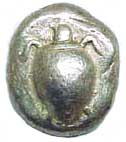
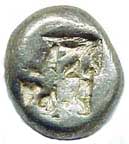
Aegina Stater 530-510 BCE
Punch with eight pronged design produced eight triangles
on the reverse.
With heavy use of the punch, the prongs eventually broke
or clogged, producing filled incuses like the above example.
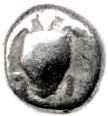
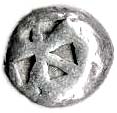
Aegina Stater c.510 BCE
Reverse punch is an incuse of an eight pronged design
which produced eight triangles on the reverse.
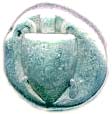
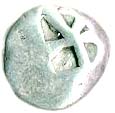
Aegina Stater c.485 BCE
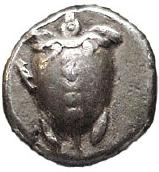
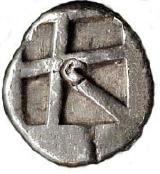
Aiginetan Stater c.500-480 BCE
Obverse design have a row of dots at the collar with
a single row of dots down its carapace and known as 'T-back turtles'.
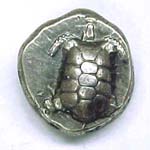
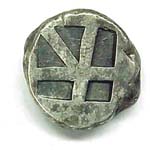
Aiginetan Stater c. 455-446 BCE
Obverse: Tortoise
Reverse punch is an incuse.
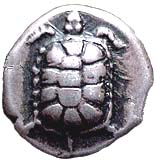
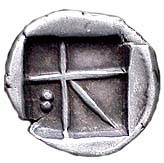
Aiginetan Stater c. 457-431 BCE
Obverse: Tortoise
Reverse punch is an incuse